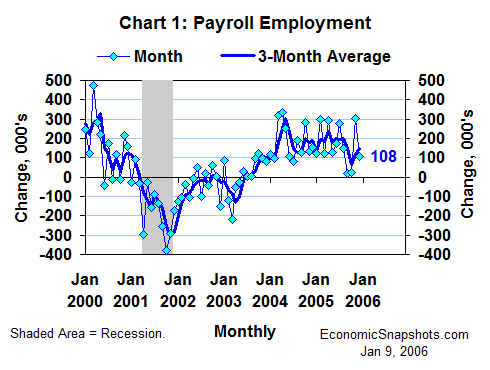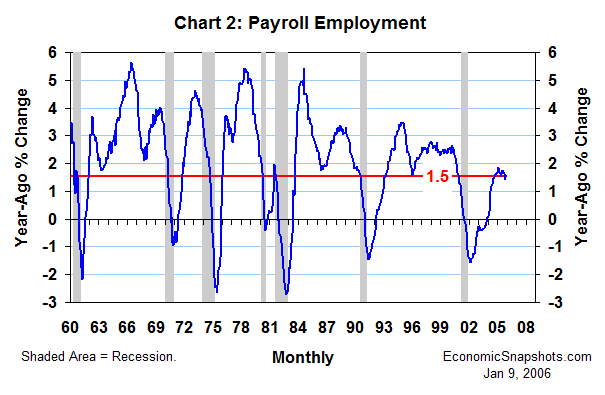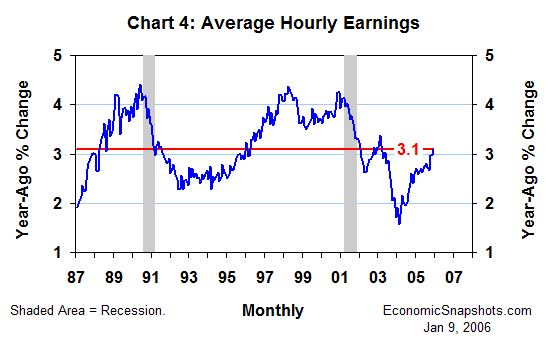
| Back to Index |
January 9, 2006 – U.S. payroll employment (released Friday) rose by a meager 108K in December (Chart 1). However, November job growth was revised 90K higher to +305K. Thus, payroll growth averaged a reasonably sturdy 206K per month for the last two months. That’s in line with its trend just before Hurricane Katrina hit these data in September.

Payroll employment rose by 1.5% in December, compared to the year-ago month (Chart 2). Payrolls have remained on a rising trend for the last two years. That’s real progress compared to the job declines and stagnation that characterized the first two years of this expansion.

Nevertheless, compared to its predecessors, this expansion continues to perform poorly on the job creation front. For example, in the matching month of the last expansion (April 1995) the year-ago payroll gain was 3.1% – double December’s rate.
The unemployment rate edged down by 0.1 percentage point to 4.9% in December – essentially unchanged (Chart 3). The unemployment rate has been essentially steady at about 5% for the last 10 months – slightly below the Congressional Budget Office’s 5.2% estimate of its “full employment” level.

The low unemployment rate seems to suggest a relatively “tight” labor supply. However, the depressed labor force participation rate (which fell by 0.1 percentage point to 66% in December) continues to suggest that the unemployment rate may be understating the economy’s labor reserves.
Average hourly earnings rose by 3.1% in the twelve months through December (Chart 4). This trend in earnings growth was little changed in the last three months, but it has gained about a half percentage point since mid-year 2005.

The FOMC has been worrying that sustained high energy costs might ultimately fuel inflationary growth in the prices of non-energy products and wages. Considering the “robust” trend in labor productivity, average hourly earnings growth isn’t strong enough yet to qualify as a major inflation threat. But, that probably wouldn’t be true for long if this trend in earnings growth continued to gain a half percentage point every six months.
According to its December minutes, the FOMC is divided on the question of when to end its current tightening “program”. When they met in December, “most” – but not all – FOMC members believed that “the number of additional firming steps required probably would not be large”. The December employment data don’t look strong enough – or weak enough – to change anyone’s views.
Suzanne Rizzo